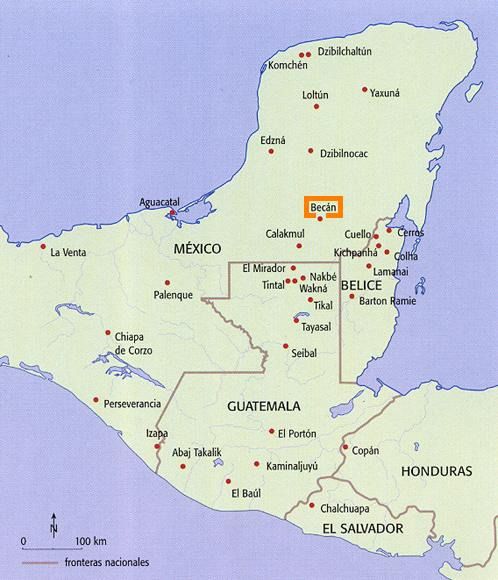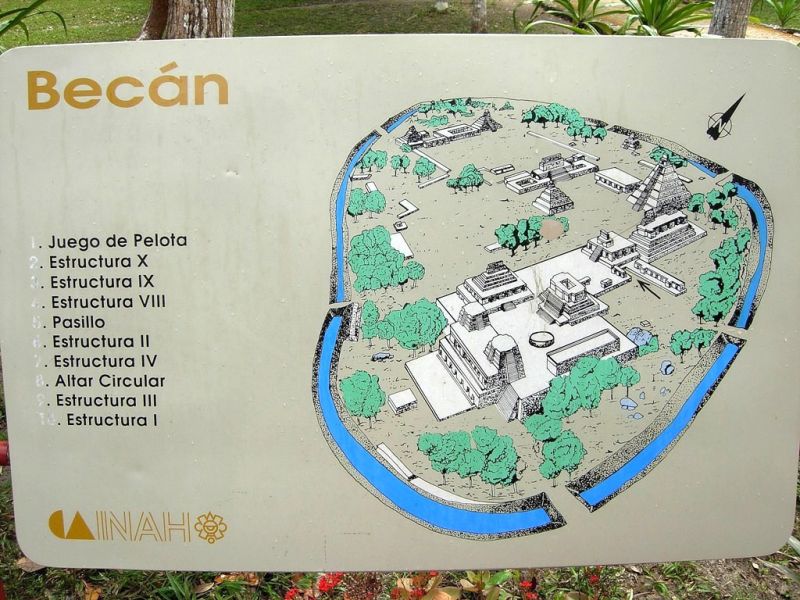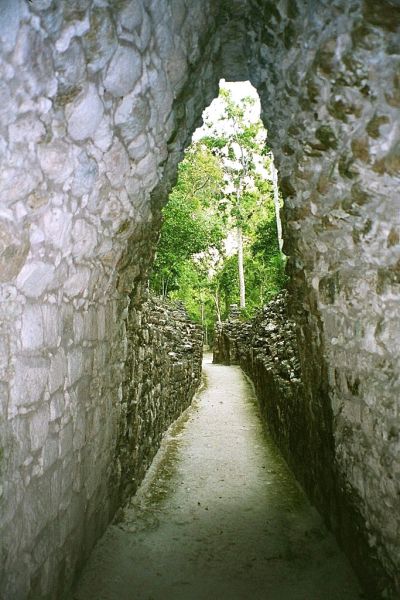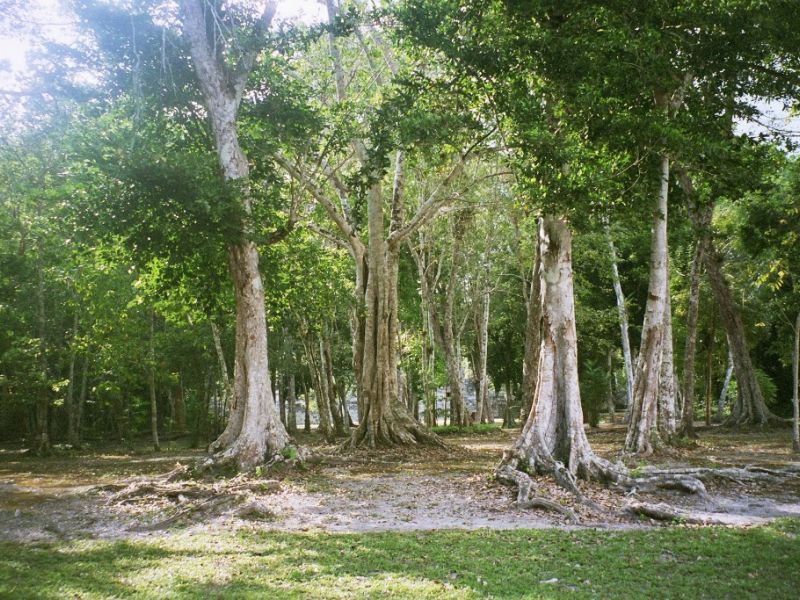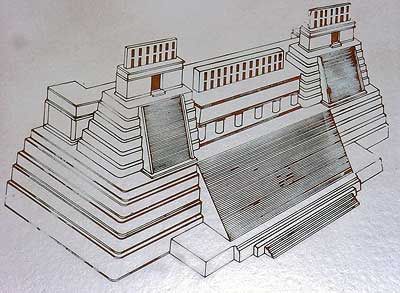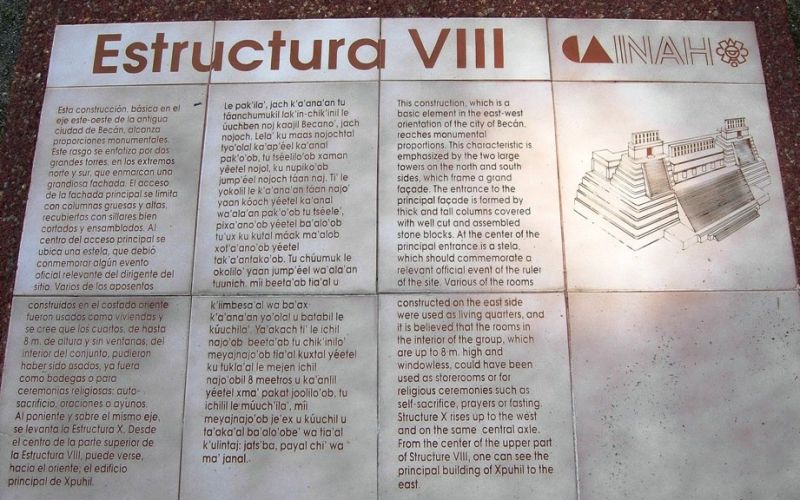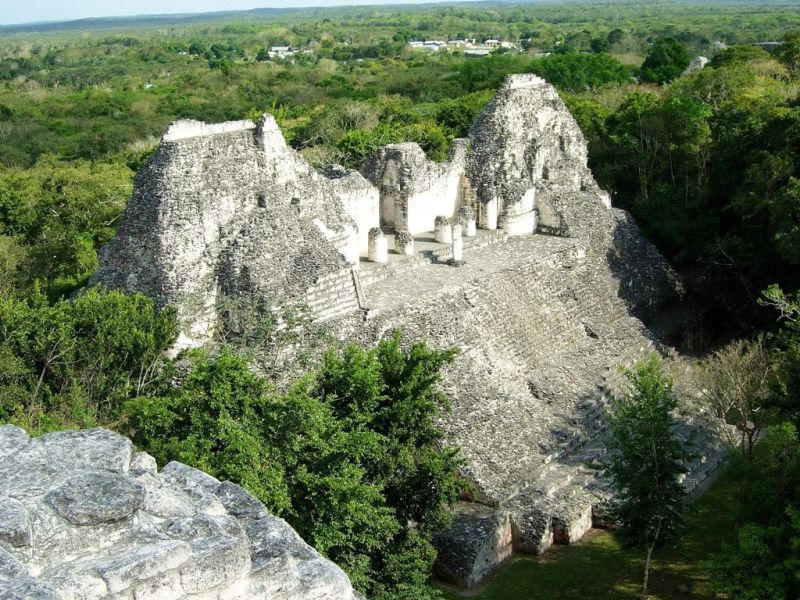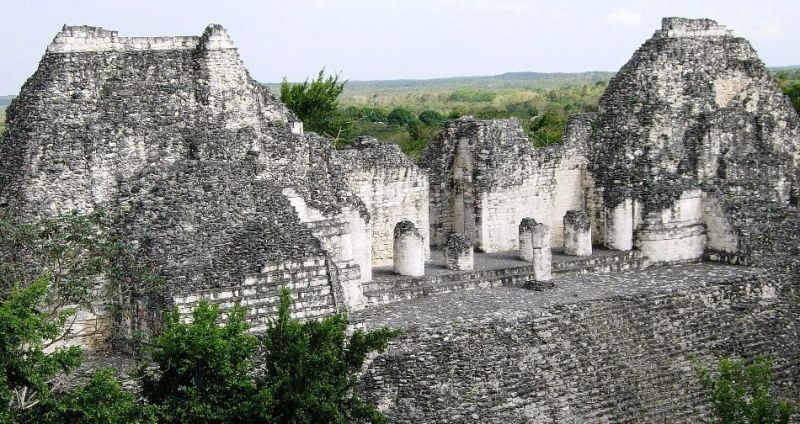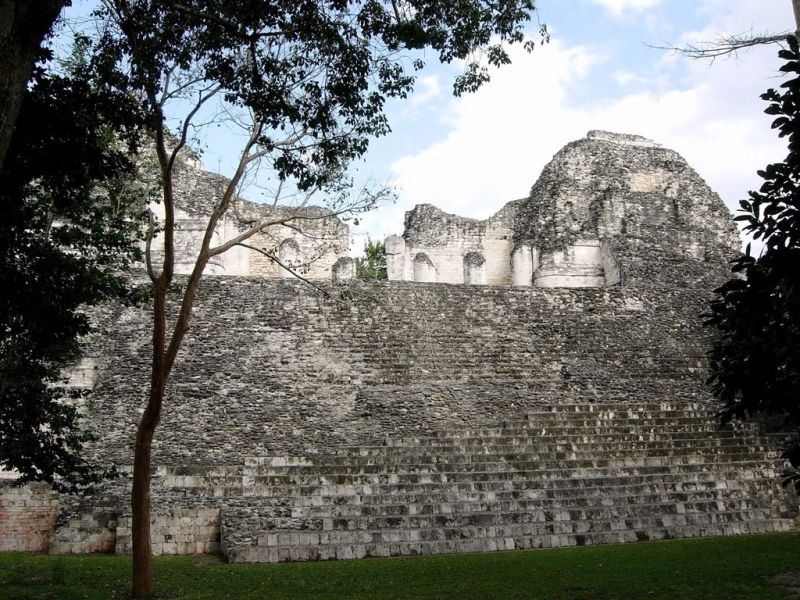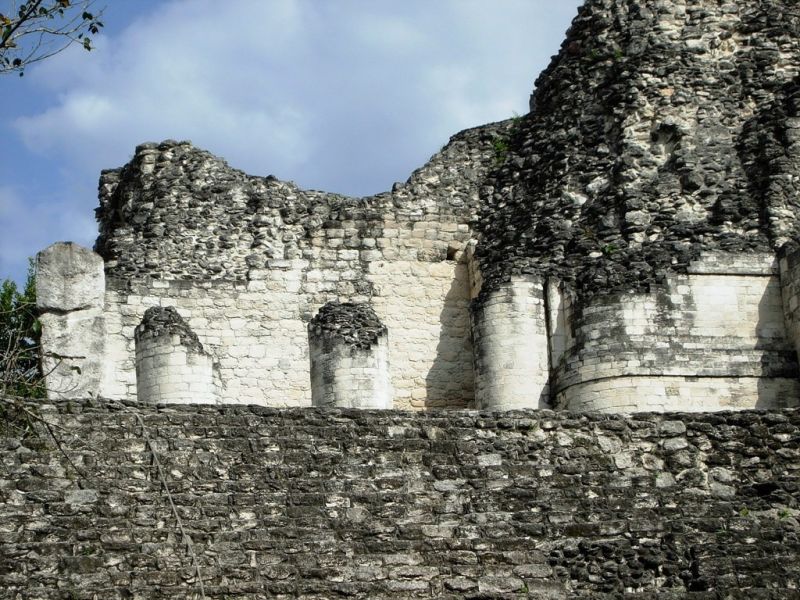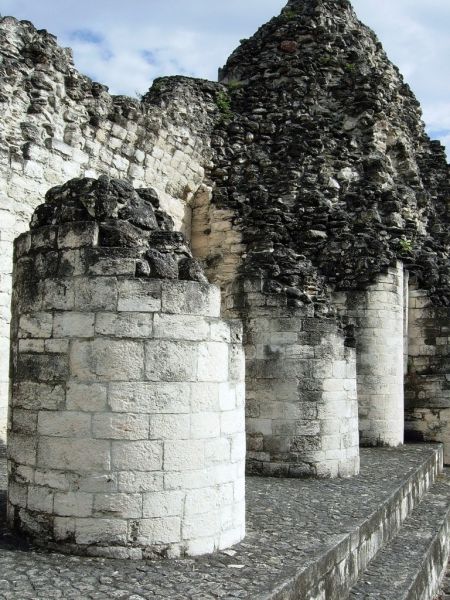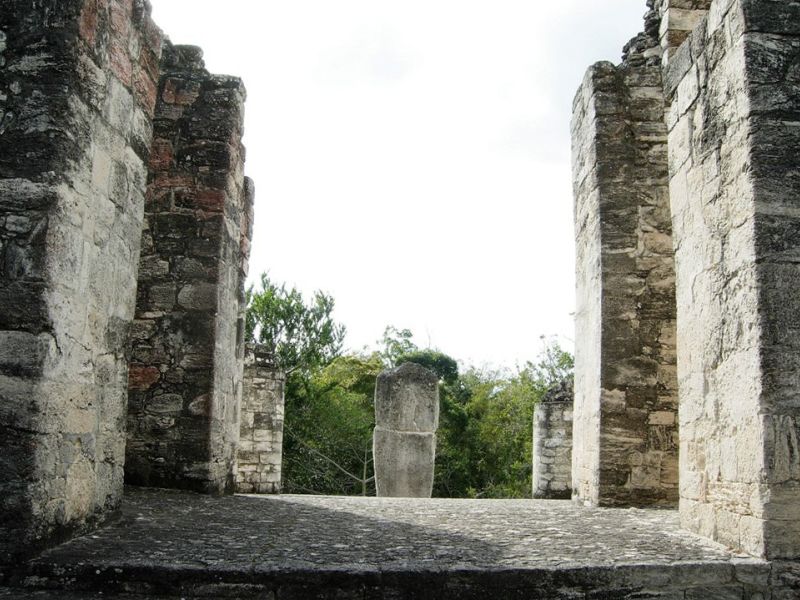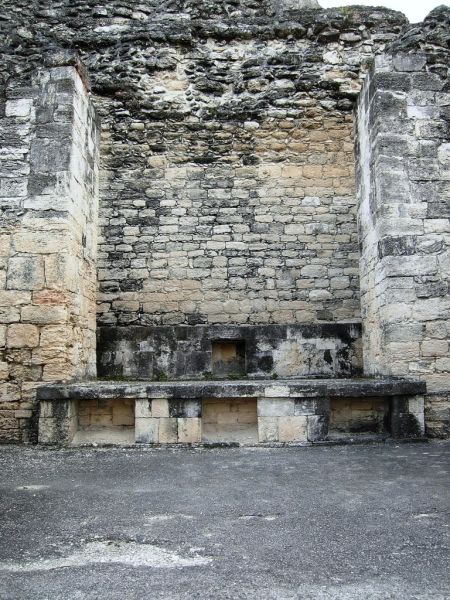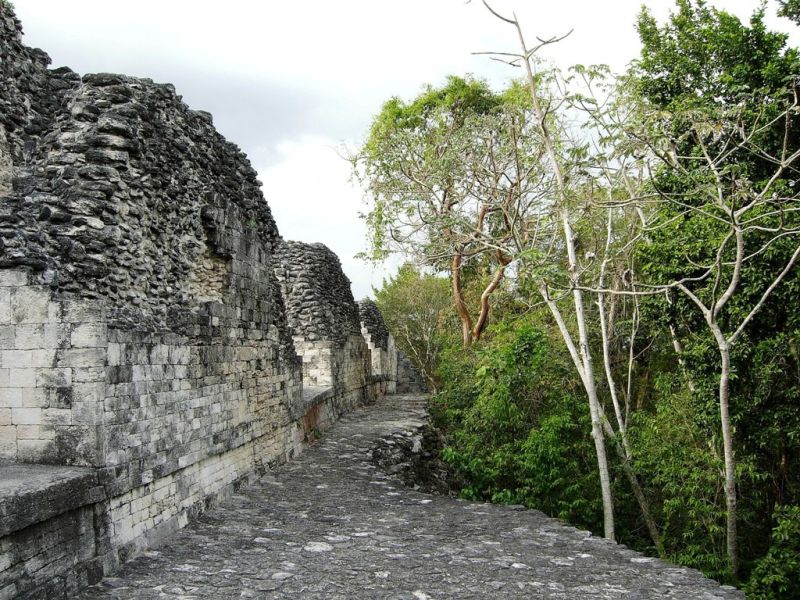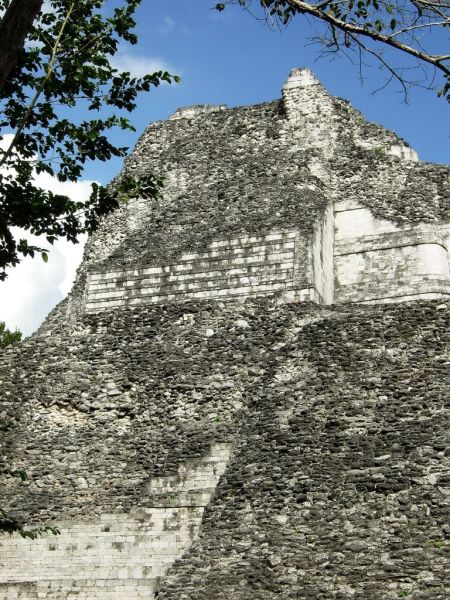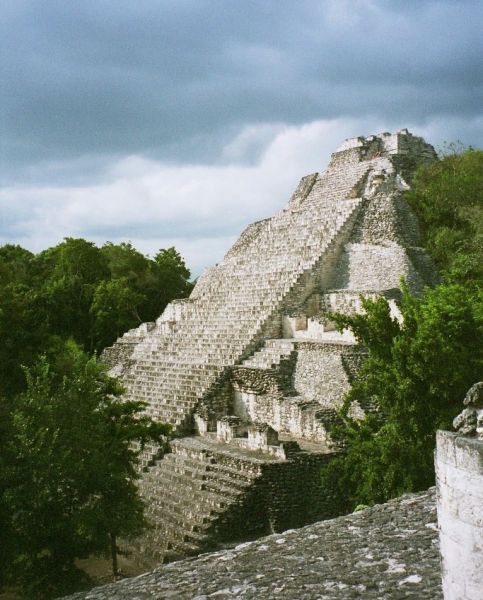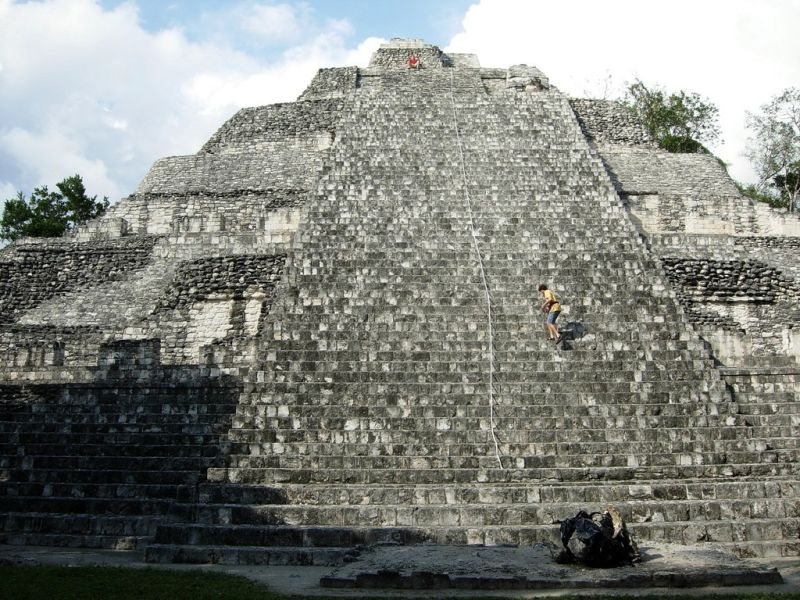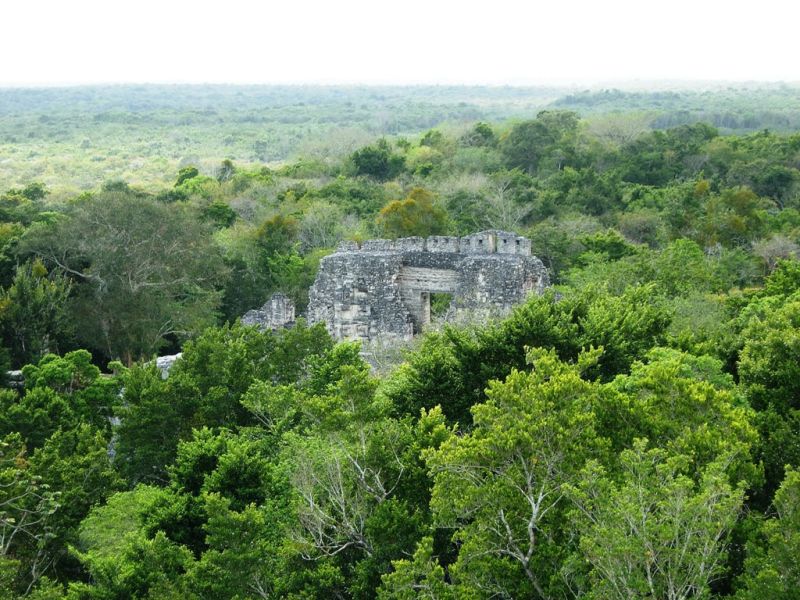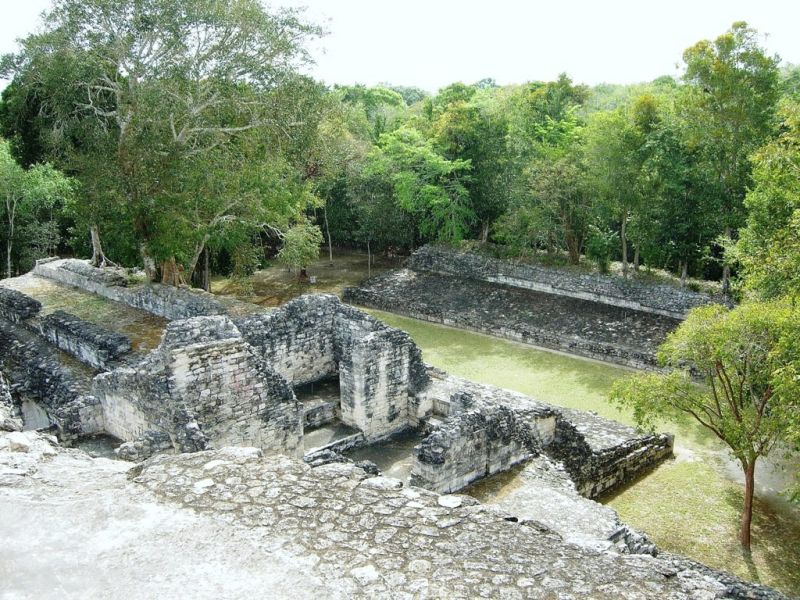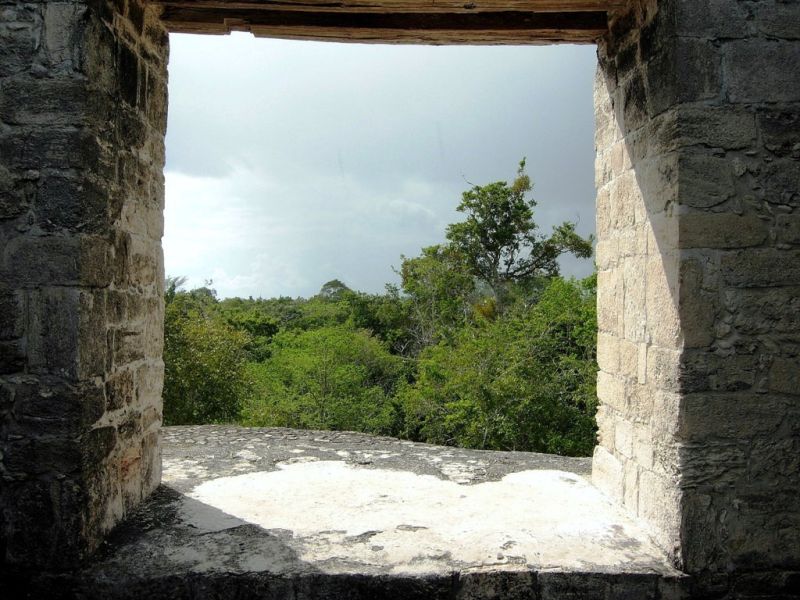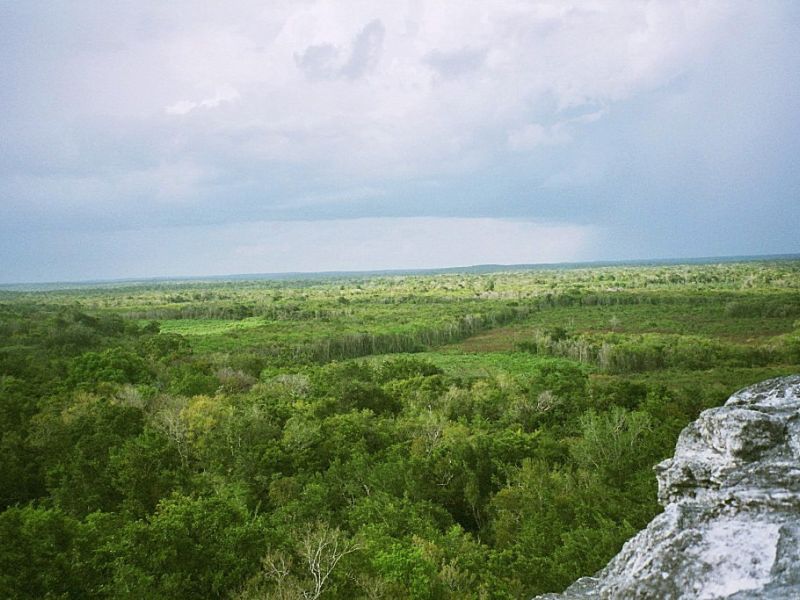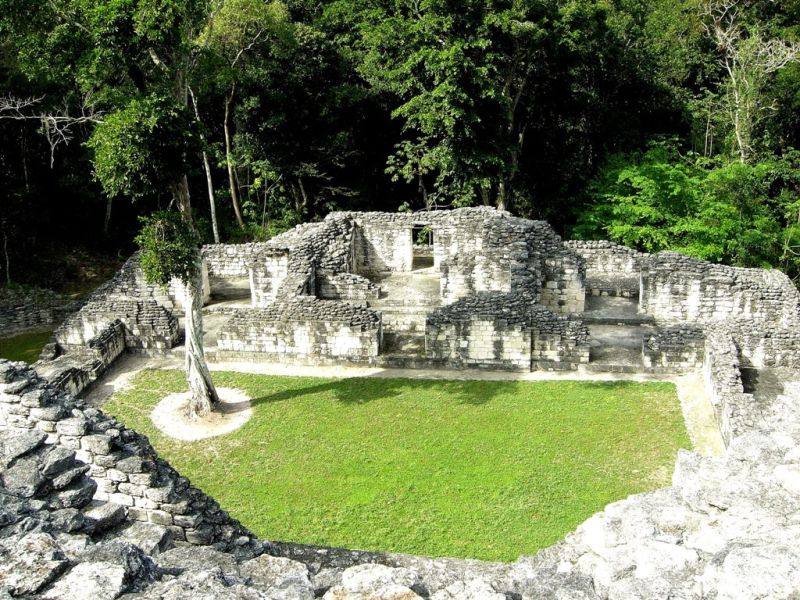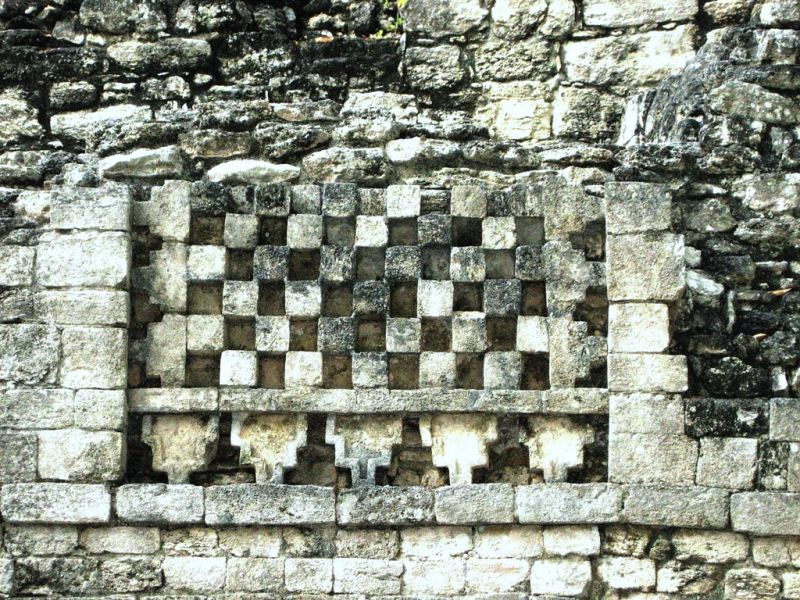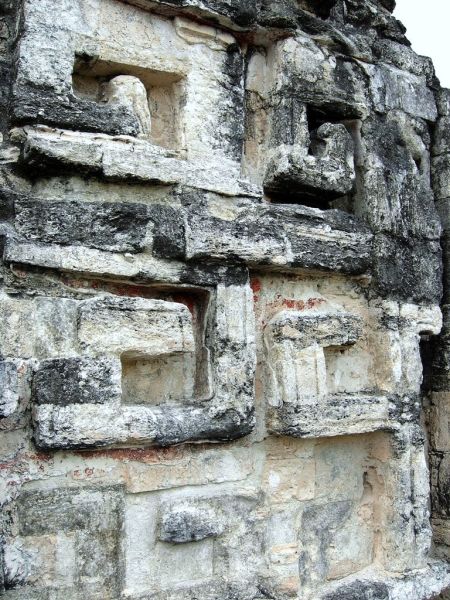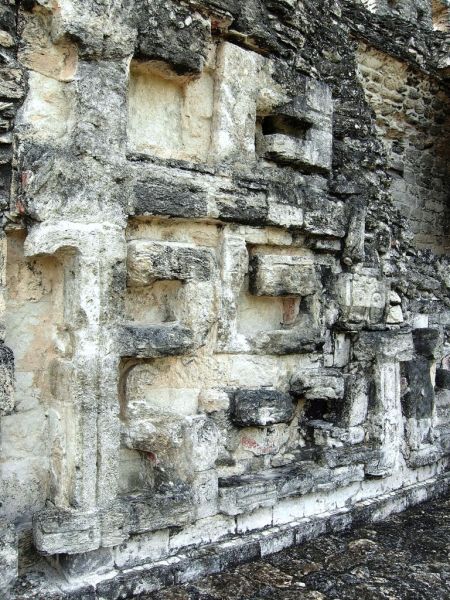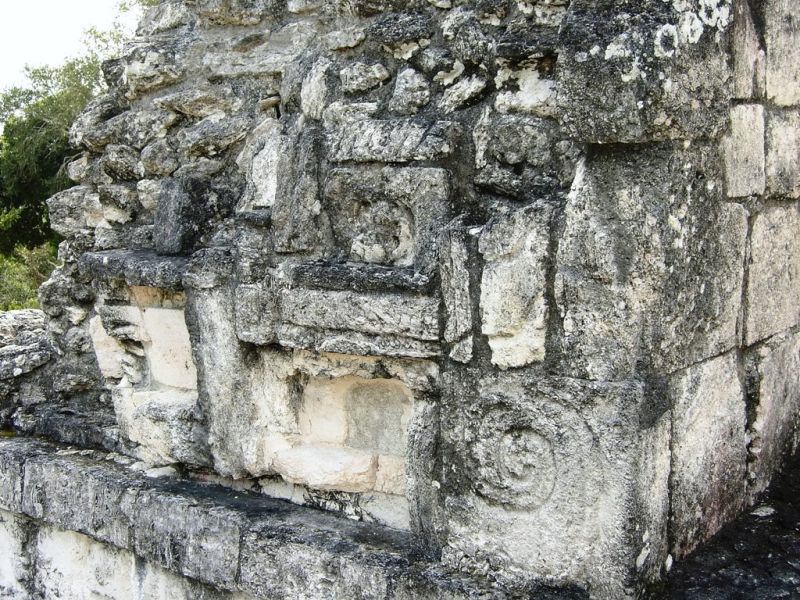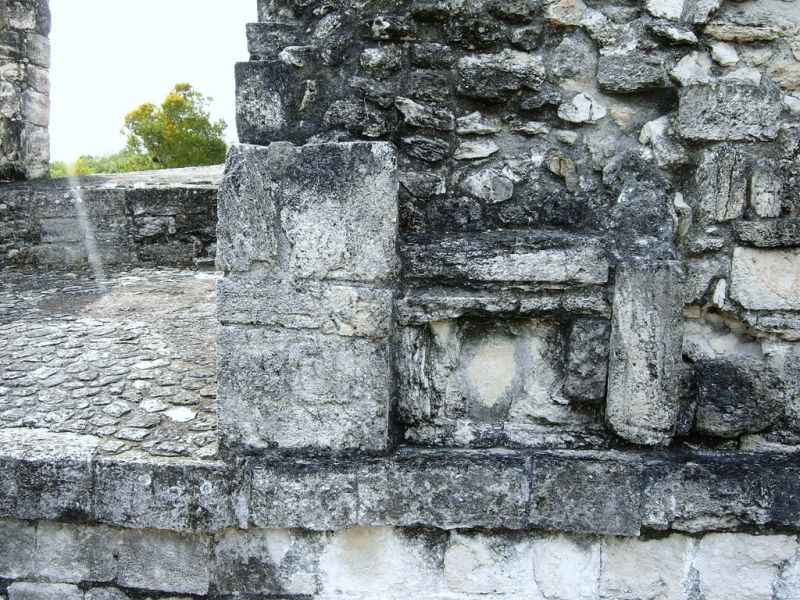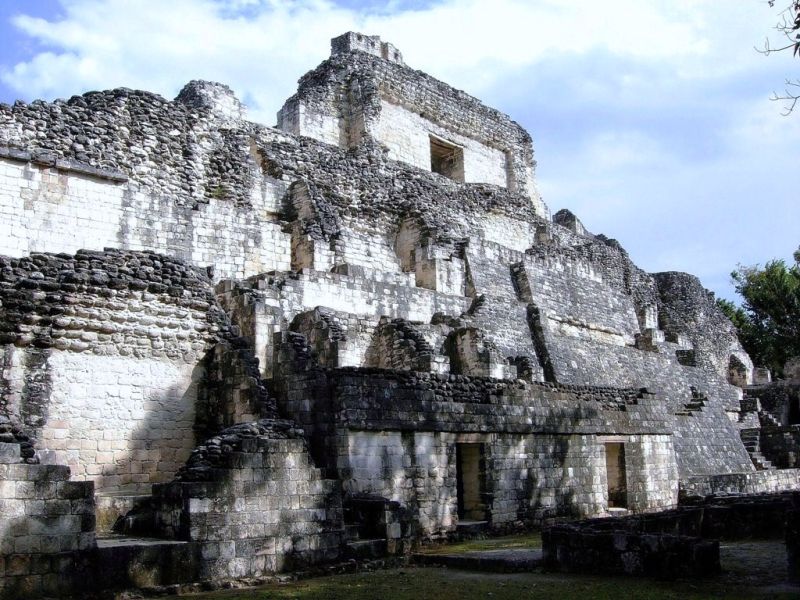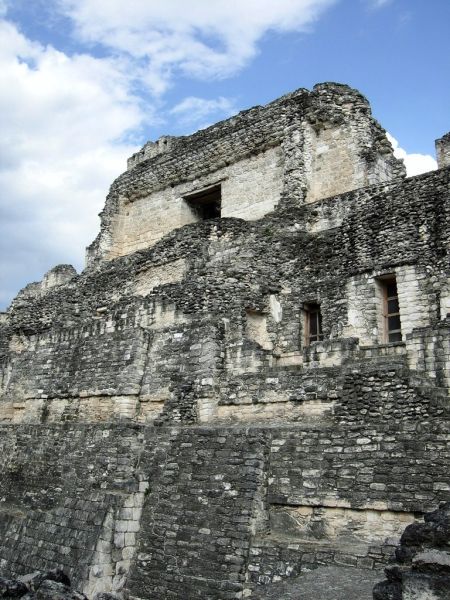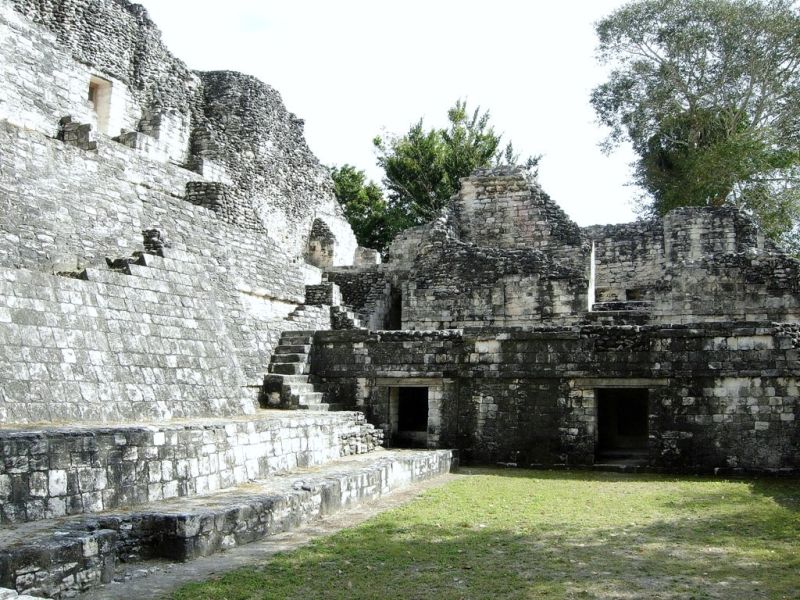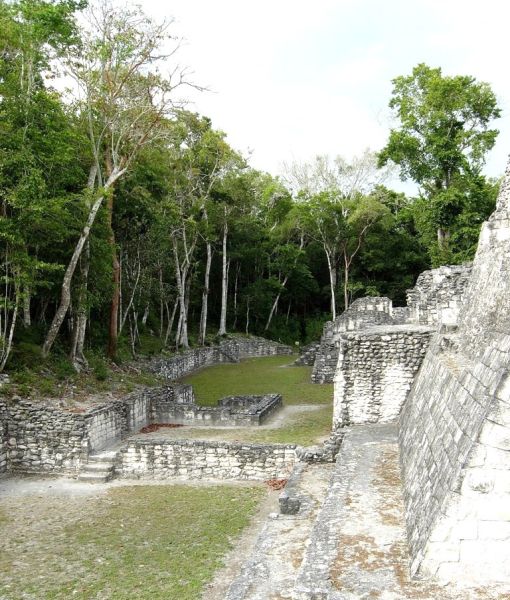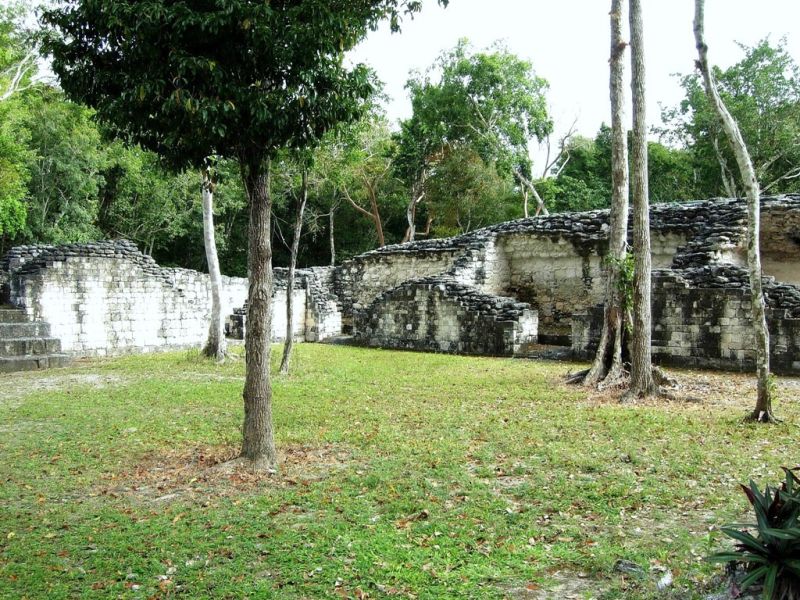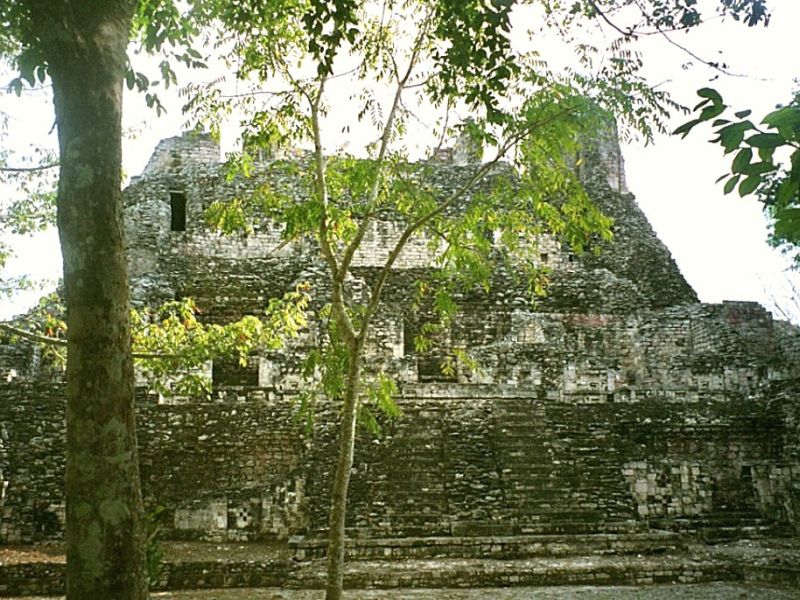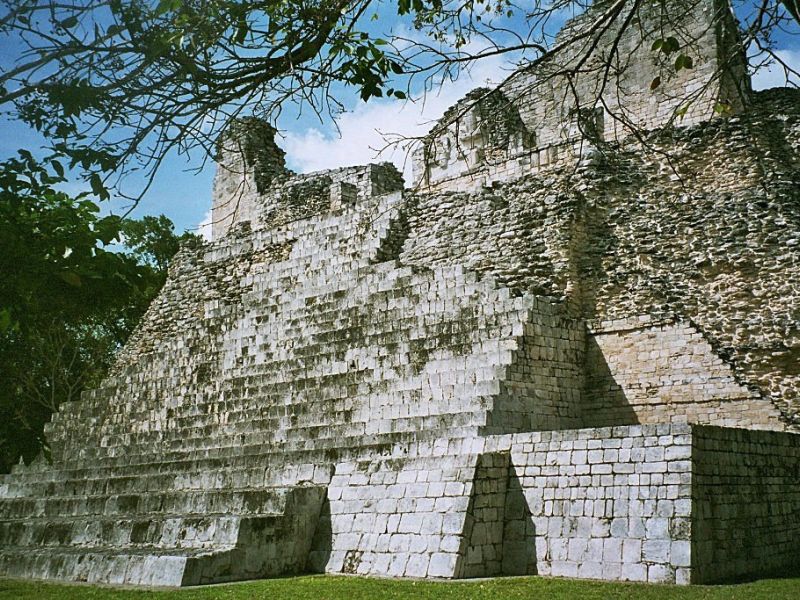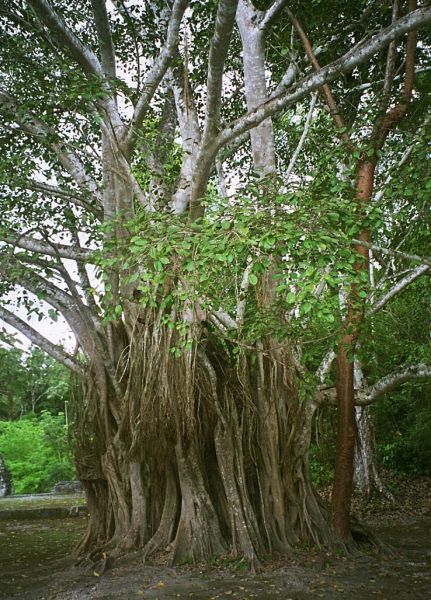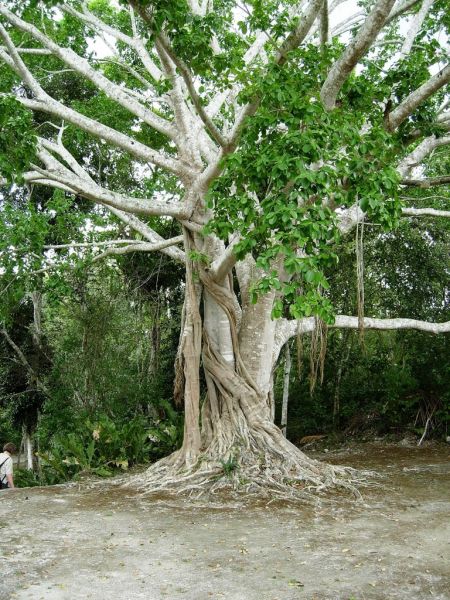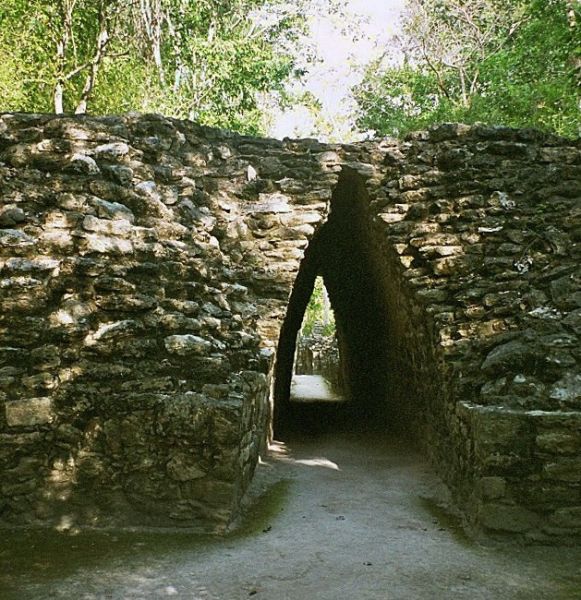




































The city of Becán, built in the Rio Bec style, was a center in the Preclassic period. It is located in the Mexican state of Campeche, in the center of the Yucatán Peninsula, 150 kilometers north of Tikal.
The name Becán means "canyon, formed by water" and refers to the surrounding ditch, which is quite unique for a Maya site (cf. Tulúm). The naming is attributed to two explorers; the historical name is unknown.
Becán was a regional religious and political center. The first evidence of human settlement dates back to 600 BC. However, the city's heyday was in the years 600-1000, and it was inhabited until about 1250.
The city was surrounded by a ditch, which was interrupted in seven places. Thus, it was not an effective military barrier, or was not completed as such. However, the large amount of work done on the ditch testifies to a strategically important location in the center of the peninsula and possibly to continuous conflicts with other cities in the region. However, the ditch could just as well have served as a spatial separation of the inner area with the monumental buildings from the dwellings of the ordinary population located in the surrounding area.
In the area enclosed by the ditch there are several groups of buildings arranged around approximately rectangular courtyards or squares.
In the area enclosed by the moat, there are several groups of buildings arranged around approximately rectangular courtyards or squares. In keeping with the Rio Bec style, the large buildings are mostly combinations of palatial buildings with numerous interiors and high false towers and false staircases that were not accessible.
Outside the ditch are four larger groups of buildings, most of which also have stelae, and a large number of smaller ones covering an area of at least 72 hectares.
